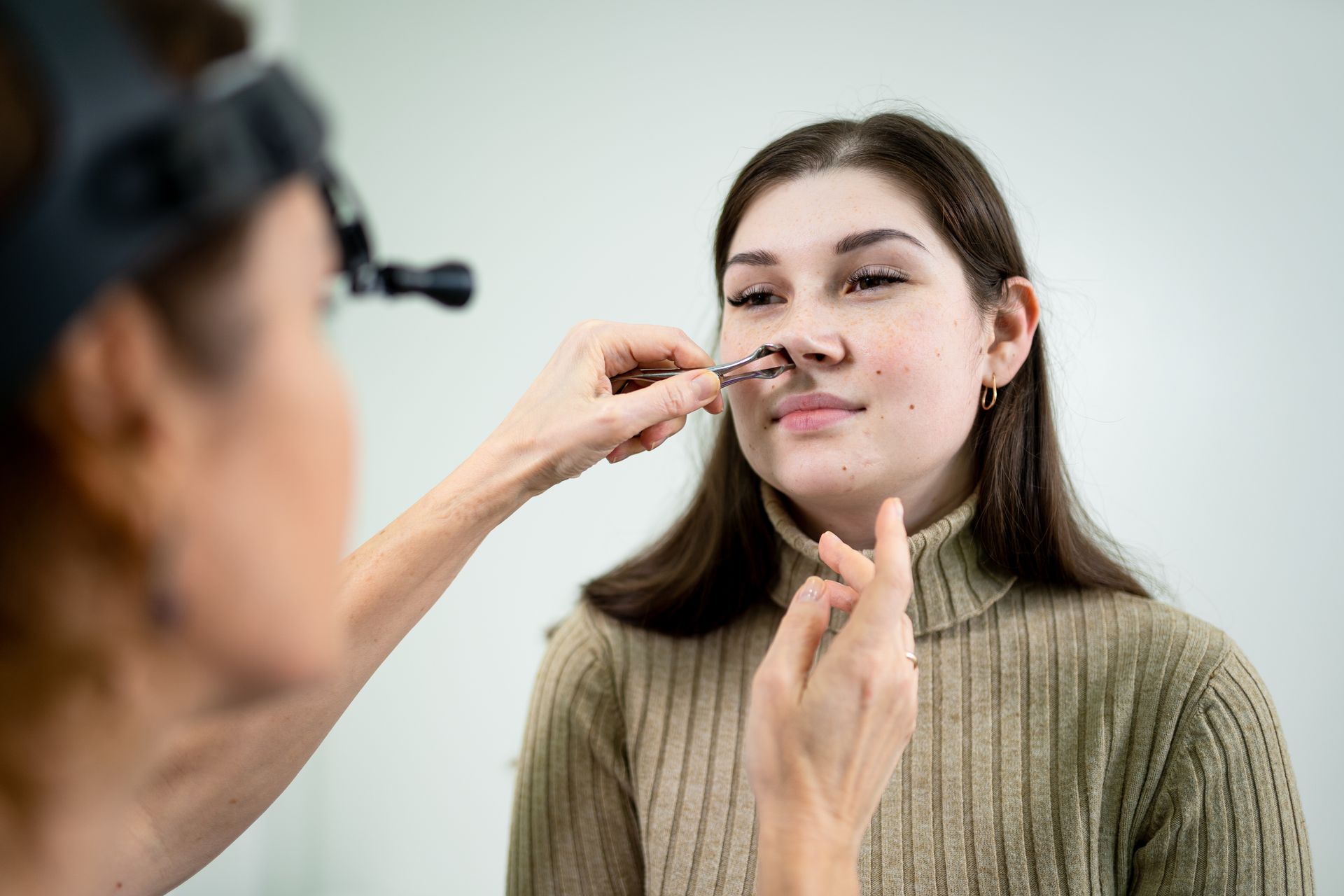Sinuplasty vs. Septoplasty: What is the Difference?
Two commonly performed procedures addressing nose and sinus issues are sinuplasty and septoplasty. While both sound similar, these surgeries differ in their focus and intended outcomes. In this blog, we will explore the differences between sinuplasty and septoplasty, helping you understand which procedure might be better for you.
Sinuplasty is a Minimally Invasive Approach to Relieving Sinus Congestion
Sinuplasty, also known as balloon sinuplasty, is a procedure that aims to alleviate chronic sinusitis symptoms. It is less invasive than traditional sinus surgeries, such as functional endoscopic sinus surgery (FESS). During a balloon sinuplasty procedure:
- With the surgeon using a small camera called an endoscope, a thin catheter with a small balloon attached is gently inserted into the blocked sinus passage.
- The balloon is then inflated to open the narrow or obstructed sinus pathway.
- Saline solution may be sprayed into the sinuses to flush out mucus and debris.
- Finally, the balloon is deflated and removed.
Sinuplasty is typically recommended for individuals suffering from chronic sinusitis where conservative treatments have been unsuccessful. It offers several benefits including:
- Minimally invasive
- Can be performed awake in the office
- Shorter recovery time compared to endoscopic sinus surgery
- Preserves normal sinus tissue
Septoplasty is Performed to Correct a Deviated Nasal Septum and Improve Nasal Breathing
Septoplasty focuses on correcting a deviated nasal septum—a condition in which the wall separating the nasal passages is crooked or displaced—often causing breathing difficulties. Unlike sinuplasty, which primarily targets the sinuses, septoplasty addresses structural issues within the nose itself.
During a septoplasty:
- An incision is made inside the nasal passage to access the deviated septum.
- The surgeon then straightens and repositions the septum, ensuring it is aligned properly.
- In some cases, excess cartilage or bone may be removed to improve airflow.
- The lining is then sutured together to close the incision.
Septoplasty is recommended for individuals experiencing difficulty breathing through the nose and snoring. The benefits of septoplasty include:
- Improved nasal breathing
- Decreased snoring and related sleep disturbances
Which Procedure Is Best Suited for You?
Determining whether you need a balloon sinuplasty or septoplasty depends on your specific condition and symptoms. A qualified ear, nose, and throat surgeon (ENT, otolaryngologist) can assess your situation, considering factors such as:
- The nature and severity of your sinus or nasal issues
- The presence of a deviated septum
- The kind of symptoms you are experiencing
Conclusion
While sinuplasty and septoplasty may sound like similar procedures, these surgical procedures treat different area of the nose and sinuses. Sinuplasty, often called balloon sinus ostial dilation, is a minimally invasive procedure that uses a small balloon to open blocked sinuses, while septoplasty is a surgery that involves reshaping the nasal septum to improve breathing.
You don’t have to live with your nasal and sinus issues. The otolaryngologists at Kentuckiana ENT, a Division of ENT Care Centers, are help you with your nose and sinus issues in Louisville, KY and Jeffersonville, IN. Request an appointment online or call (502) 894-8441 and let us help you feel better.













